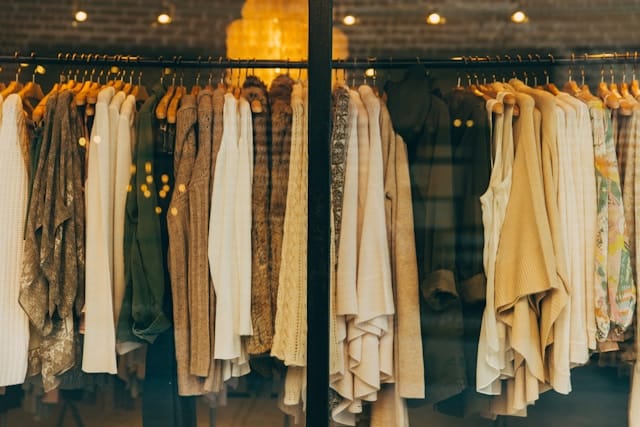In the dazzling world of haute couture and high-end fashion, the allure of luxury goods and logos has always been tantalizing. Yet, as coveted as these items are, their prices often place them out of reach for the average consumer. Enter the shadowy realm of luxury counterfeiting—a phenomenon as old as the concept of fashion itself.
Nowhere is the impact of luxury counterfeiting more palpable than in the bustling streets of fashion capitals like New York City, where vendors peddle counterfeit wares with impunity in tourist hotspots like Times Square and Canal Street. But the internet has emerged as the new frontier for counterfeiters, presenting a formidable challenge for brands striving to protect their image and integrity.
Since the pandemic, the online marketplace for these goods has surged. It is now easy to find third-party vendors selling fake, defective or counterfeit goods. Now, more than ever, it is important for designers to understand the differences between legal knockoffs, infringing products and counterfeits, so they can protect their brand from fashion thieves.
Trends in Counterfeit Designer Goods
The surge in counterfeit designer clothing gained momentum in the late 1970s, coinciding with the rise of designer jeans. Suddenly, conspicuous labeling and brand identity became synonymous with status and reputation, with the Levi’s back pocket logo standing out as a prime example. This trend has only intensified over the years, fueled by an appetite for logo-driven items and propelled by advancements in technology that facilitate the production and distribution of fake goods.
Fast forward to the present day, and the extent of luxury counterfeiting is staggering. In 2020 alone, the fashion industry suffered losses exceeding $50 billion due to counterfeit sales, a figure projected to soar to $81 billion by 2026. To put this into perspective, the global trade in counterfeit goods accounted for more than $500 billion in 2016, constituting 38% of the legitimate fashion industry’s value.
Identifying Knockoffs and Counterfeits
If you encounter a design or product in the marketplace that is similar to your own, it can be frustrating. Sometimes these copies or knockoffs are legal, but if they are not, they may be infringing upon your IP rights.
Knockoffs
It is a common misconception that knockoffs are always illegal. A knockoff is legal if: (i) the copy does not incorporate any of the original IP, (ii) the quality of the knockoff is different than the product it is copying, and (iii) the copier does not intend on misleading consumers into believing its product is the original product.
Knockoffs are common in “fast fashion”—a sub-industry in which retailers sell less expensive versions of the latest designer fashion trends. For example, if a fast fashion retailer sells a very similar dress to the dress worn by an A-list superstar on the red carpet, there is likely no legal recourse available to the original designer if the retailer is not using the designer’s brand name, changed the print slightly and used less expensive fabric. When these retailers produce legal knockoffs, their goal is usually for consumers to achieve a similar style to the original without paying full cost.
A copycat version of a product is also legal when the original product is ineligible for IP protection. For example, black underwear is a basic, common and useful product that is not entitled to protection.
Counterfeits
To counterfeit is to distribute or manufacture a good that utilizes a mark that is identical to, or substantially indistinguishable from, a federally registered trademark. The counterfeiter (i) must have intentionally used the trademark knowing its use was counterfeit, or (ii) was willfully blind and deliberately disregarded the trademark owner’s use.
An example of a counterfeit item would be a handbag that looks identical to a Louis Vuitton handbag because its print, label, logo and design are a near exact replication of the original bag.
Certain counterfeit products, especially beauty products, have the potential to cause physical harm to consumers as well as reputational damage to businesses. The counterfeit product’s marketing, packaging and design may be identical to the high-end brand. However, the counterfeit product is manufactured with cheaper and harsher chemicals. If a consumer has an allergic reaction to the counterfeit product, they may incorrectly believe that it was caused by the high-end brand, damaging the brand’s reputation.
How Do Fashion Designers Protect Their Designs from Fashion Thieves?
The ramifications of this illicit market are far-reaching, not only siphoning revenue from legitimate luxury brands but also fostering a parallel economy that undermines fair competition. In response, brands are compelled to engage in a relentless battle to safeguard their intellectual property, resorting to round-the-clock efforts to police their trademarks and combat counterfeiters. Intellectual property (IP) law provide designers with much-needed protection.
Within IP law, fashion brands most often utilize trademark, copyright, and sometimes even patent law. It is common practice for designers to trademark their brand’s name, logo, symbol or unique phrase to use as a source and quality identifier to establish brand recognition. Under Star Athletica, L.L.C. v. Varsity Brands, Inc., 137 S. Ct. 1002 (2017), certain elements of clothing design can also be eligible for copyright protection. Decorative, non-functional features on a useful product, such as a complex bow or sweat-wicking fiber, may also be eligible for patent protection.
Some designers may even pursue criminal actions by reporting the counterfeiting to the appropriate law enforcement authorities. Factors that authorities often examine before deciding whether to bring criminal charges include: (i) the involvement of organized crime, (ii) public health and safety concerns and (iii) the amount of loss and harm.
Conclusion
The repercussions for luxury brands are profound, as counterfeiting not only erodes revenue streams but also undermines brands’ carefully cultivated goodwill, exclusivity and prestige. In response, brands must adopt a multi-faceted legal strategy, actively monitoring online platforms, pursuing legal action against counterfeiters, and collaborating with law enforcement agencies to stem the tide of illicit trade.
Protecting your brand is not only critical to your business’s success, it is also crucial for consumer protection. Understanding the nuances of the counterfeit luxury landscape prepares you in the event your designs or products are sold in the marketplace without your consent. Contact an attorney with experience in the fashion industry today.



